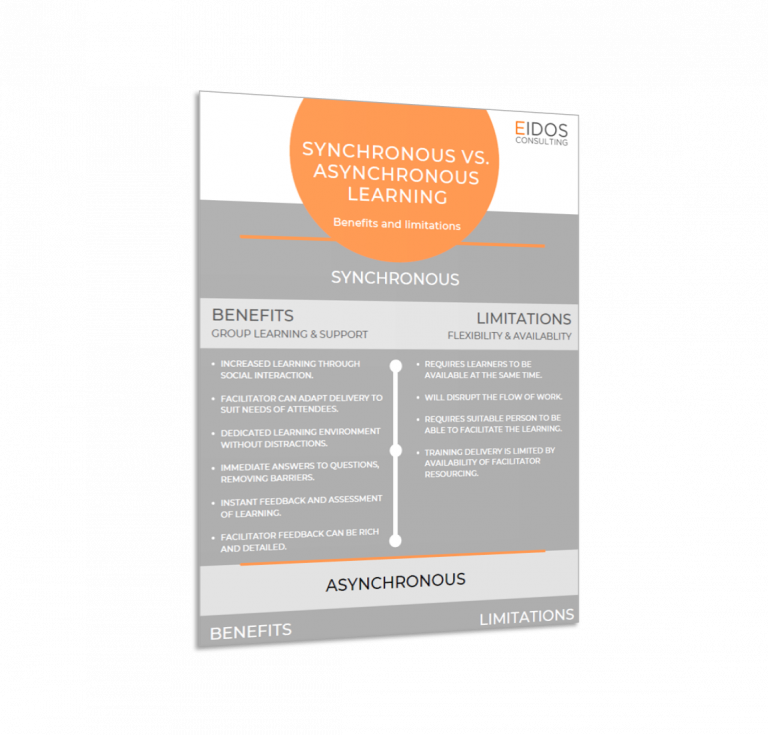When planning your online learning delivery, how do you decide if the learning should be facilitated by a trainer or if the learner should take full ownership?
There are some clear benefits and limitations to both approaches:
3 benefits of synchronous learning
- Social interaction creates a richer learning experience for participants.
- A dedicated learning environment forcibly removes the learner from distractions.
- The facilitator can adapt their delivery of learning to suit the needs of learners.
3 limitations of synchronous learning
- Facilitated learning has an inherent lack of flexibility in its availability and location.
- Participation in facilitated learning activities disrupts the flow of work.
- Facilitated learning is restricted by the availability of suitable facilitators and is therefore not very scalable.
3 benefits of asynchronous learning
- Learning can be undertaken at a time and place that suit the individual.
- Individuals can study at their own pace.
- Individuals can access learning that is specifically relevant to them.
3 limitations of asynchronous learning
- Independent learning requires a greater degree of personal motivation.
- Learning in isolation can be a lonely experience.
- Feedback and support is limited and delayed.
Synchronous vs asynchronous infographic
Our infographic looks at all of these points and more, helping you to consider which approach best suits the needs of your business, and whether a blended approach could give you the best of both worlds.
Click on the image below to view the full infographic.

Other people also downloaded...